DX
Left adrenal mass with vascular invasion of the phrenicoabdominal and caudal vena cava. Remaining normal abdominal organs with no evidence of hepatic, splenic or right auricular metastatic disease.
Outcome
Further interpretation and recommendations from Dr. Roth were as follows: "Concurrent thrombus formation, especially regarding the CVC component, is also possible. This adrenal neoplasm is likely unrelated to the cutaneous hemangiosarcoma with primary differentials including a different neoplasm such as pheochromocytoma, which is more likely with vascular invasion, or adenocarcinoma. If aggressive treatment is elected there is some chance that the mass and associated vascular component could be surgically removed given the well encapsulated nature and the non-adherent characteristic of the intravascular component. However, excision would not be without risk for hemorrhage or vascular tearing and there is some concern for extracting the caudal vena cava component through the reduced diameter orifice of the phrenicoabdominal vein with the diameter being half the width of the measured mass diameter of the caudal vena cava component. Consultation with an experienced, board-certified surgeon is recommended. Concurrent consultation with a veterinary oncologist could also be considered for optimal treatment approach given the presence of the already documented cutaneous hemangiosarcoma. Lastly thoracic radiographs should be acquired if not already performed to evaluate for pulmonary metastatic disease. If surgical resection is considered CT may provide some additional surgical planning information. However, given the quality of this ultrasound exam I suspect minimal significant additional information would be obtained thereby directing resources for treatment rather than additional diagnostics." The patient did not go on to have surgery, but is getting treated with chemotherapy at a referral clinic and doing well.

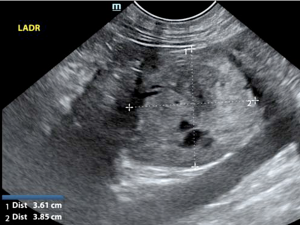
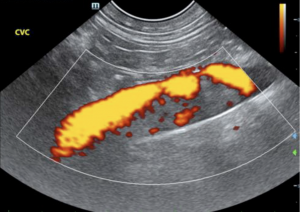
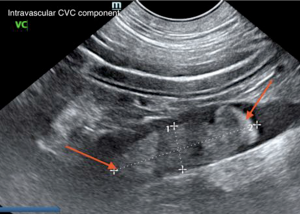
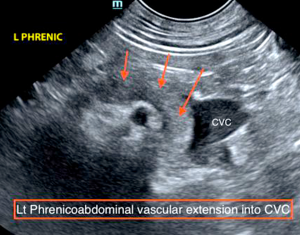
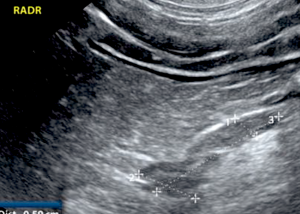

Comments
Want to learn to recognize and image completely like this, or refine your imaging a bit to take it over the top? Register for our 3-day SDEP™ Abdomen lab May 17-19, 2019.